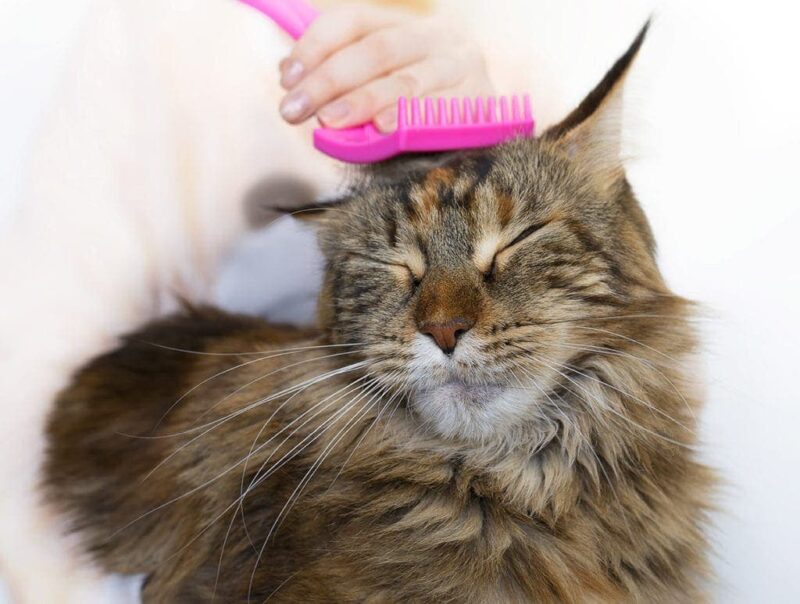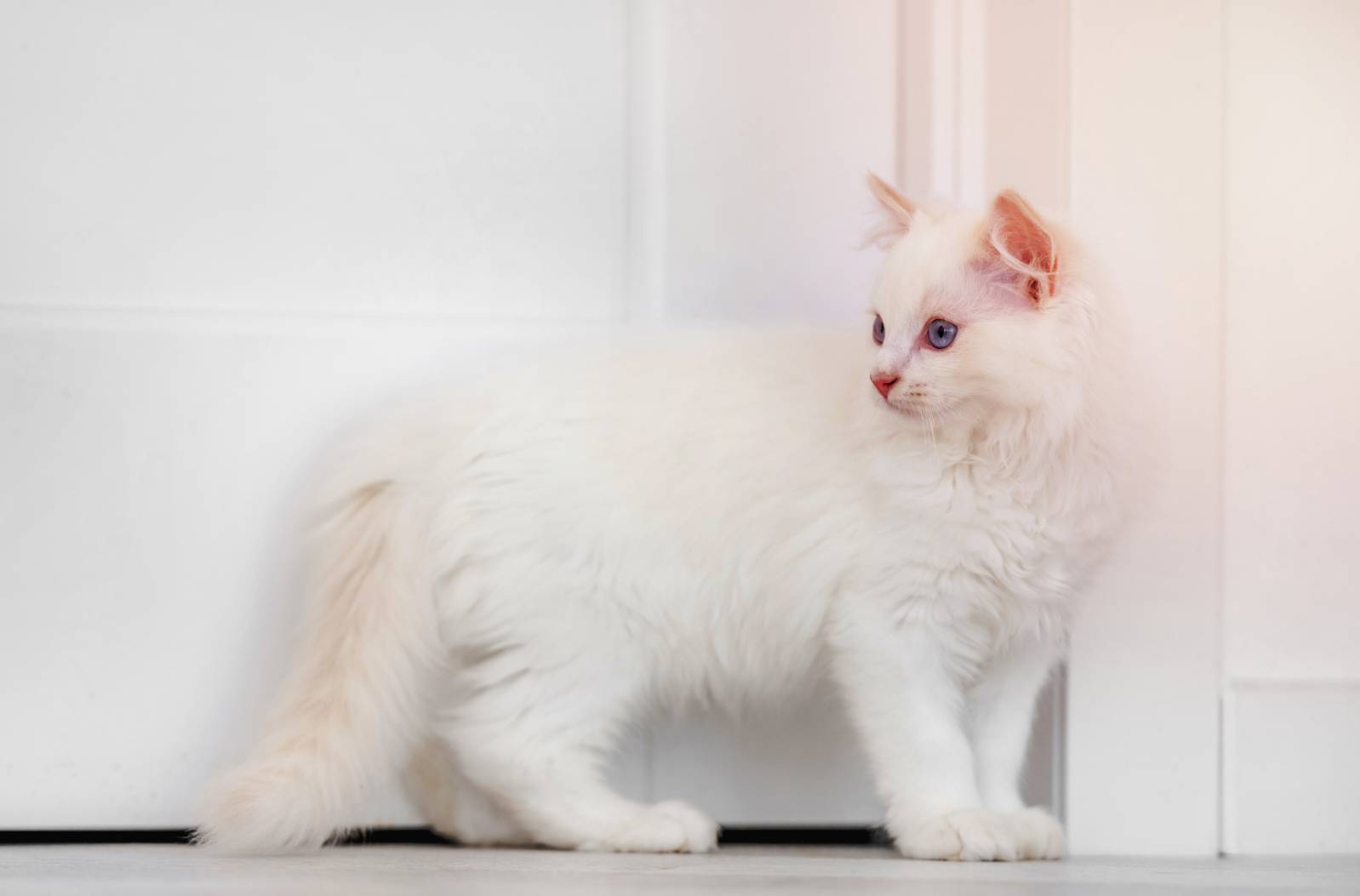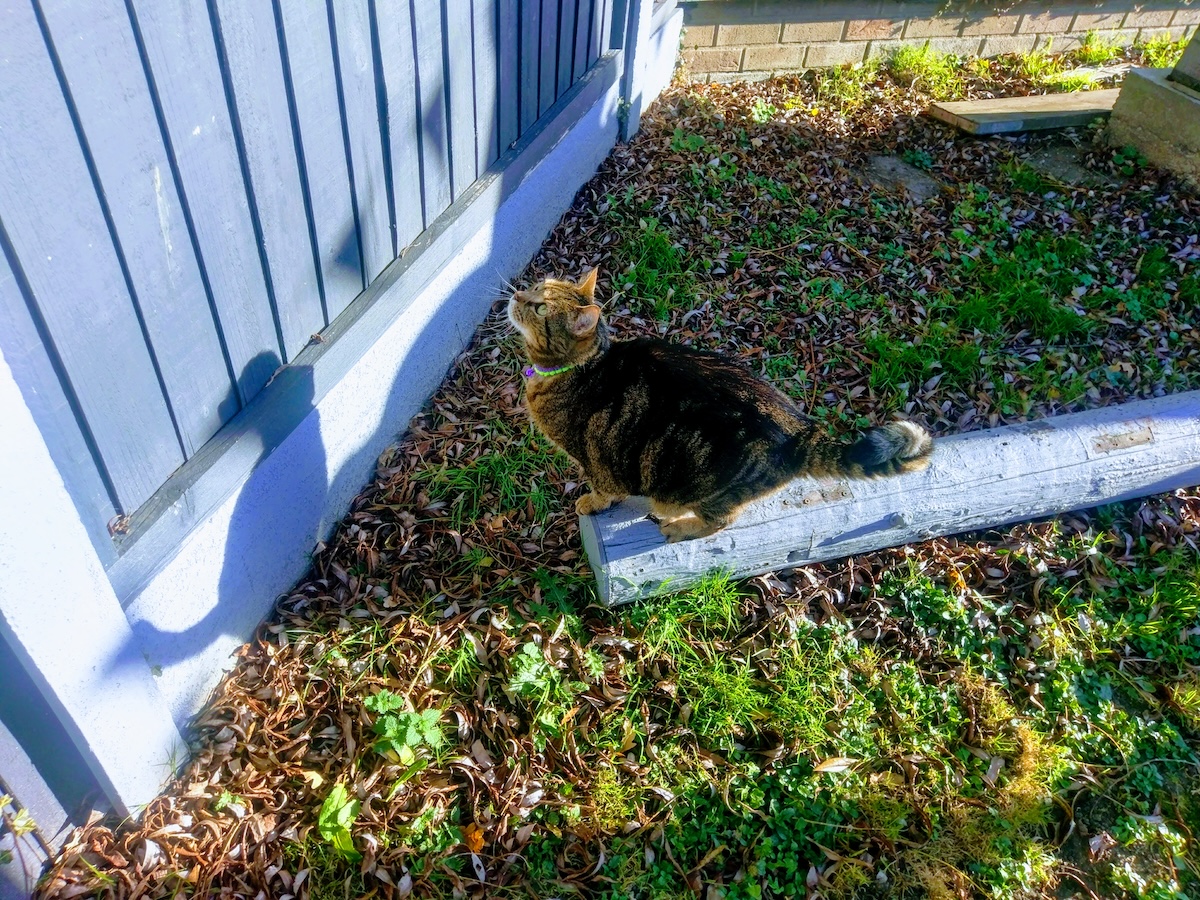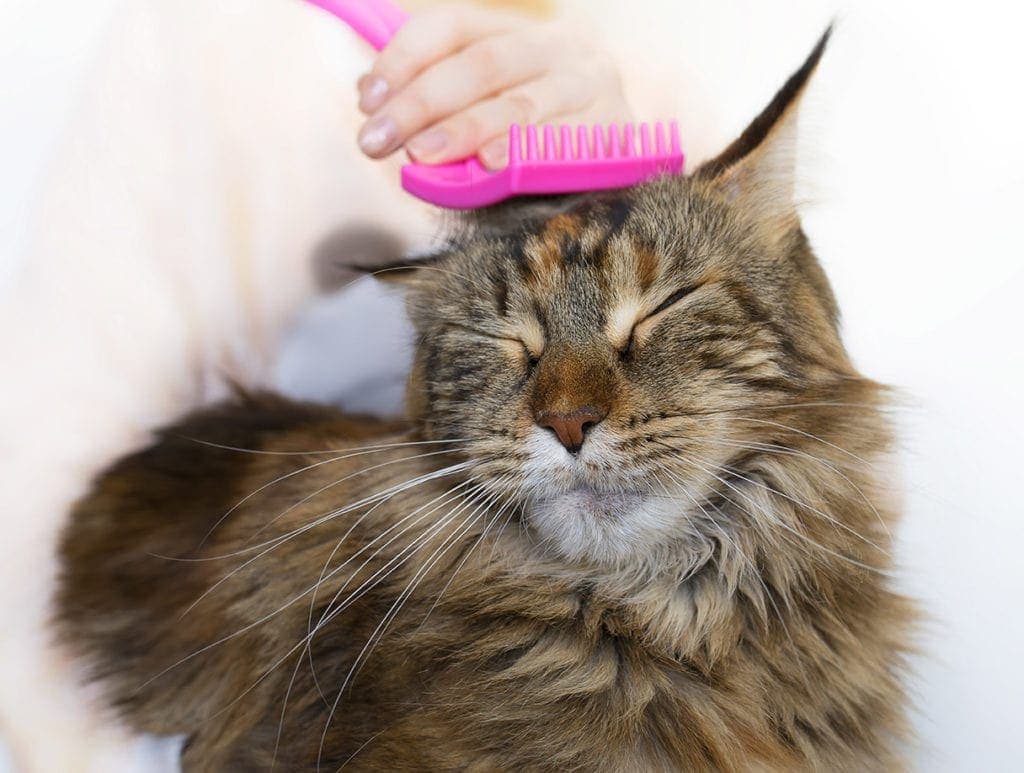
A Quick Comparison of Our Favorites of 2024
| Image | Product | Details | ||
|---|---|---|---|---|
| Best Overall |

|
Hepper Cat Brush |
|
CHECK PRICE |
| Budget Buy |

|
Hartz Groomer Combo Pet Brush |
|
CHECK PRICE |

|
GoPets Dematting Cat Comb |
|
CHECK PRICE | |
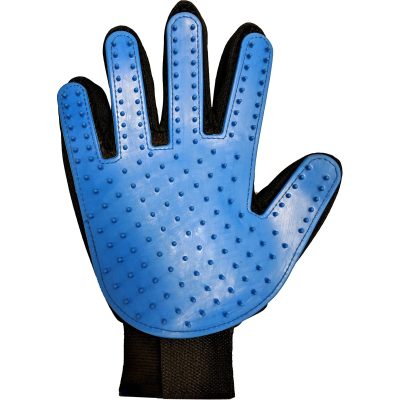
|
Ethical Pet Spot Grooming Glove |
|
CHECK PRICE | |

|
FURminator Long Hair Cat Deshedding Tool |
|
CHECK PRICE |
The 10 Best Brushes for Maine Coon Cats
1. Hepper Brush for Maine Coon Cats – Best Overall
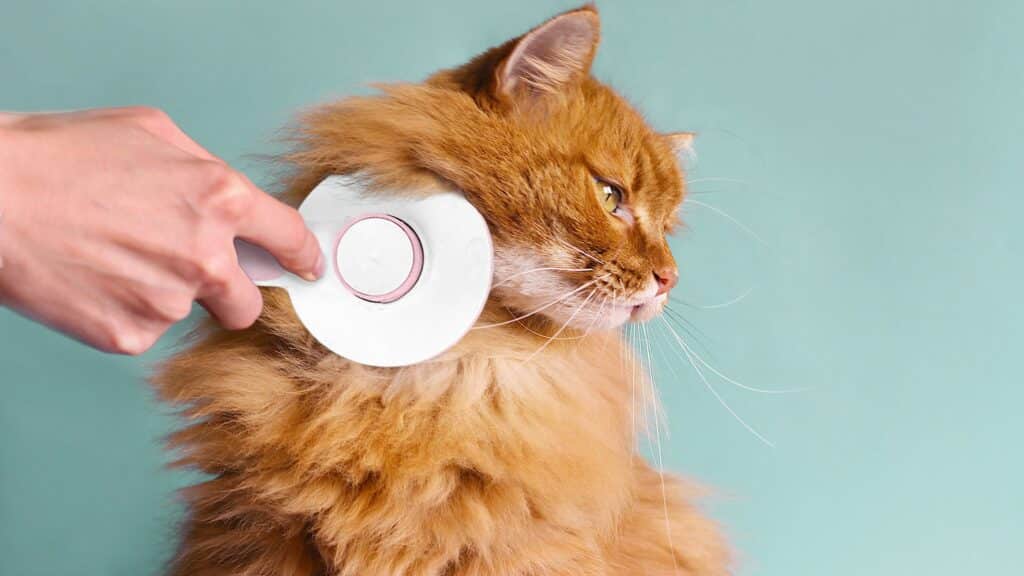
The Hepper Cat Brush gets deep into your Maine Coon’s thick fur without irritating their sensitive skin. The stainless-steel pins allow you to thoroughly brush through your cat’s topcoat and undercoat with minimal effort. With an ergonomically designed handle made from high-quality, durable, and non-toxic ABS thermoplastic, this brush is perfect for grooming your long-haired kitty.
This brush is a breeze to use, quickly removing matting, tangles, loose hair, and dander in a single stroke. It’s perfect for nervous cats, and once grooming time is over, simply click the button and all the collected hair drops off. This brush is waterproof and can be quickly cleaned with soap and water, and comes in three attractive pastel shades. There’s no mess and no stress with the Hepper Brush, which is why it’s our choice for the best overall brush for Maine Coon cats.
The only downside we experienced is that this brush may not be able to work through already matted fur.
At Catster, we’ve admired Hepper for many years and decided to take a controlling ownership interest so that we could benefit from the outstanding designs of this cool cat company!
- Easy, one-click hair removal
- High-quality stainless-steel pins
- Waterproof and easy to clean
- Made with non-toxic materials
- Keeps thick fur in healthy condition
- Ideal for nervous cats
- Might not be able to tackle tough mats
2. Hartz Groomer’s Best Combo Dog Brush – Budget Buy
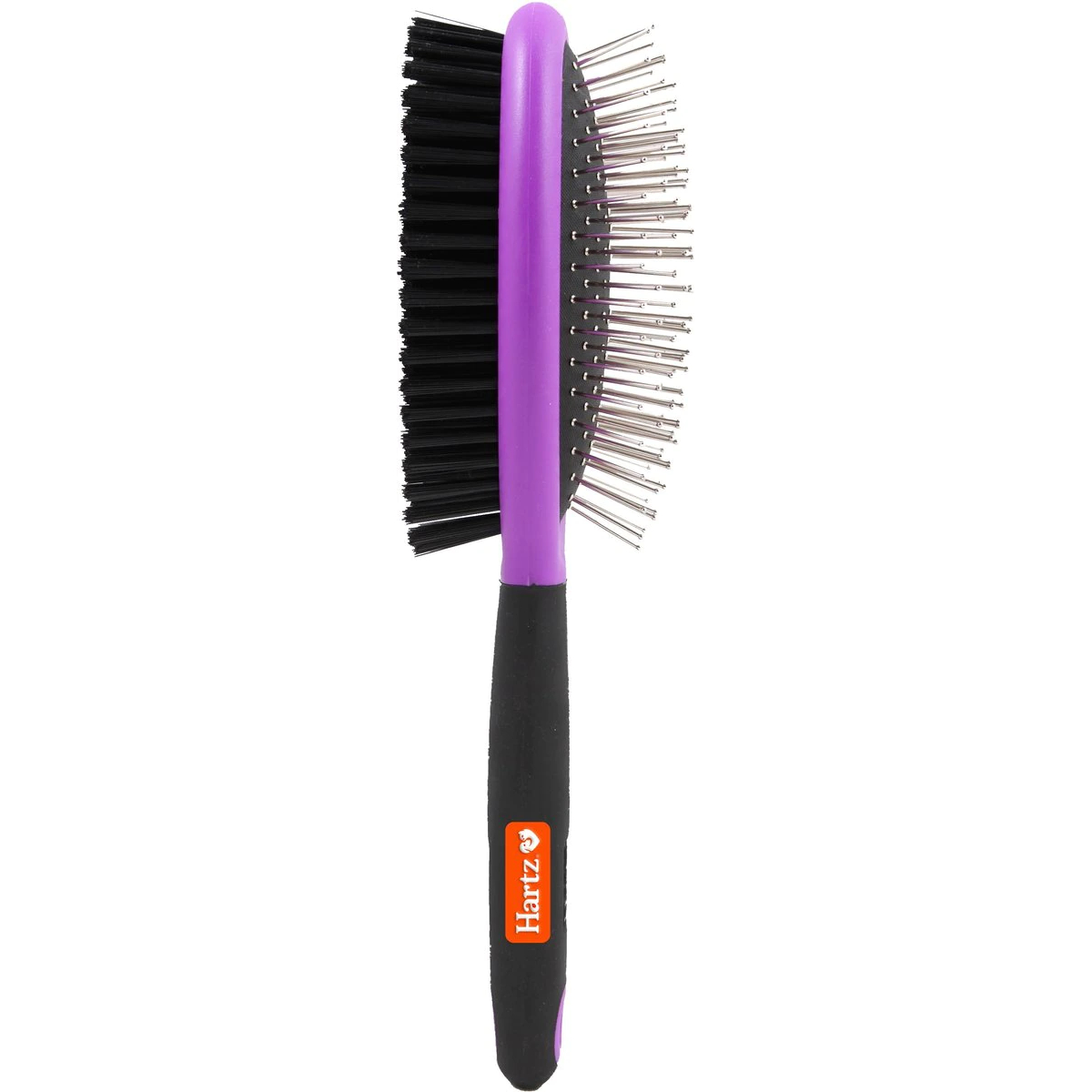
| Weight | 6.56 ounces |
| Life stage | Adult |
| Material | Plastic |
Our choice for the best brush for Maine Coon cats for the money is the Hartz Groomer’s Best Combo Dog Brush. Although marketed for dogs, this two-sided brush works great on a Maine Coon’s long coat, especially for the price. One side features steel bristles that are ideal for removing tangles or clumps of loose hair. The other side has a nylon brush that helps smooth your cat’s coat while helping to spread its natural oils to keep the coat shiny and healthy.
The simple design of this brush makes it easy to use by anyone. The only downsides are the size, which makes it difficult to maneuver, and that it is not self-cleaning. You’ll need to clean your brush often to keep it free of excess hair when not in use.
- Inexpensive option
- Double-sided design
- Help keep coats shiny and healthy
- Is not self-cleaning
- Large size and difficult to handle
3. GoPets Dematting Comb 2 Sided Grooming Rake

| Weight | 3.52 ounces |
| Life stage | Adult |
| Material | Stainless steel |
Another choice brush for Maine Coon cats is the GoPets Dematting Comb with Grooming Rake for Cats. This brush is designed to help deal with cats that are prone to matted fur and tangles. Gentle on your cat, this tool is double-sided with 12 teeth on one side while the other has 23. This gives pet owners two options to help deal with tangles of different sizes. The 23-toothed side is also ideal for removing dander and caring for your cat’s undercoat.
The teeth of this tool are rounded which gives your cat a pleasant experience during the grooming process. The non-slip gel handle makes holding and using it easy but is also this tool’s biggest downside as it can break and leak gel quite easily.
- Easy to grip
- Gentle on your cat’s skin
- Works on tangles of all sizes
- The handle can easily break and leak
4. Ethical Pet Spot Grooming Glove
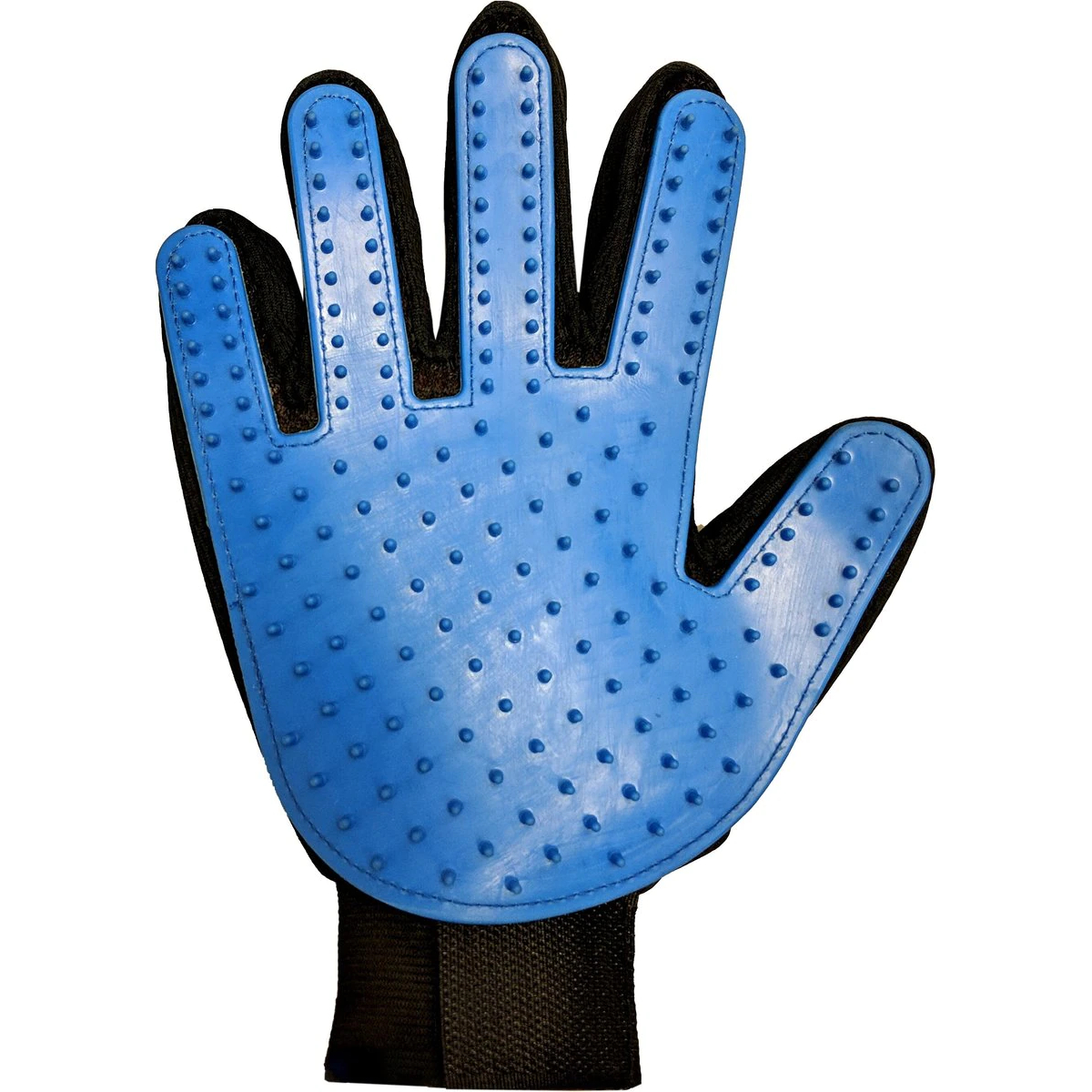
| Weight | 2.56 ounces |
| Life stage | Adult |
| Material | Rubber |
If you’re searching for the best grooming option for your Maine Coon kitten, the Ethical Pet Spot Grooming Glove may be your answer. While these gloves were originally intended for adult cats, many users are finding them quite easy to use on kittens. For kittens that are active or slightly frightened of grooming tools, these gloves mimic the feel of their owner’s pets. In most situations, this allows the kitten to sit still while this convenient glove removes unwanted hair and most tangles.
For the owner, the one size fits all design eliminates the guesswork involved with purchasing. These gloves are great for removing loose hair but if your kitten is suffering from numerous tangles, you may need to use a second tool as these gloves don’t remove stubborn tangles.
- One size fits all
- Gentle on a cat’s skin
- Easy to use
- Doesn’t remove all tangles
5. FURminator Long Hair Cat Deshedding Tool
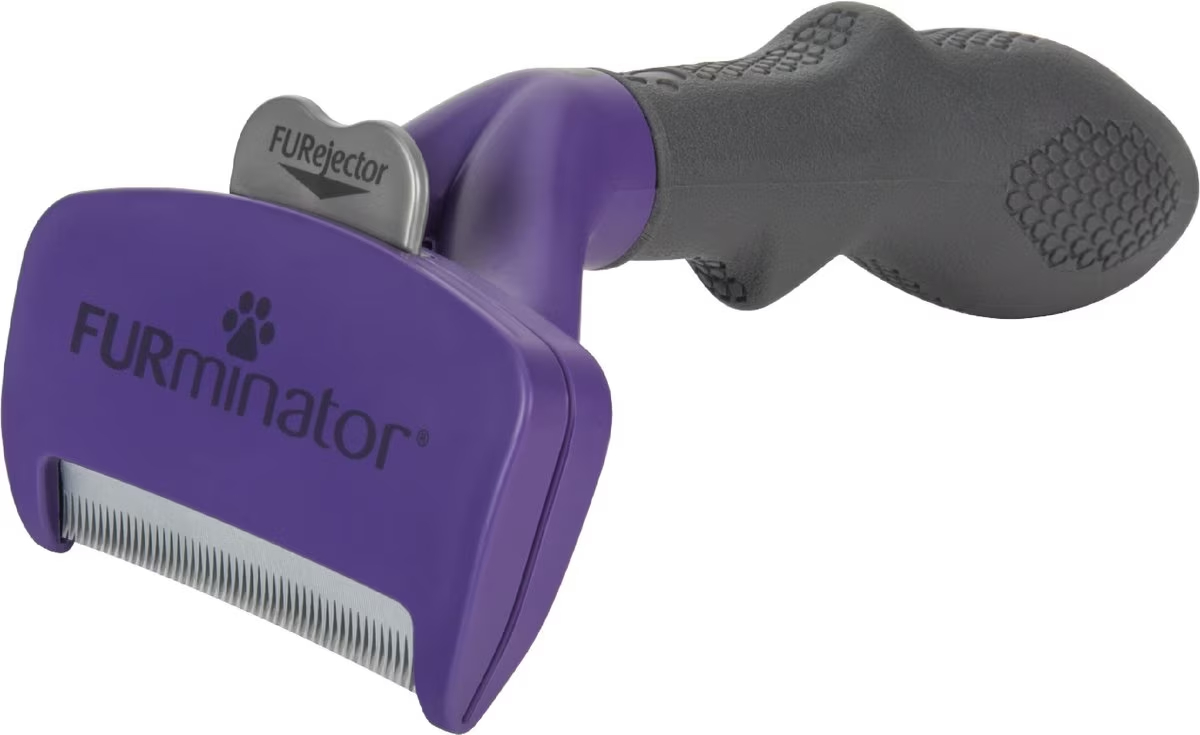
| Weight | 12.66 ounces |
| Life stage | Adult |
| Material | Stainless steel |
The FURminator Long Hair Cat Deshedding Tool is designed to help eliminate excess hair and is ideal for use with cats that tend to shed excessively, like your Maine Coon. By using a stainless-steel edge, this tool penetrates your cat’s topcoat and helps eliminate loose hairs even in their undercoat. When used routinely, many owners have seen a reduction in loose hair of up to 90%. The use of this de-shedding tool has also been noted for helping reduce the number of hairballs your cat must deal with thanks when used as directed.
The handle is designed to make use easy on the pet parent while the edge is curved slightly to make grooming more comfortable for cats. The biggest downside to the FURminator deshedding tool is the self-cleaning hair ejector. When using this button to clean the tool, often hair is left behind requiring more time for a proper cleaning.
- Reduces shedding by 90%
- Easy-grip handle
- The ejector button doesn’t release all the collected hair
6. Safari Self-Cleaning Slicker Brush for Cats
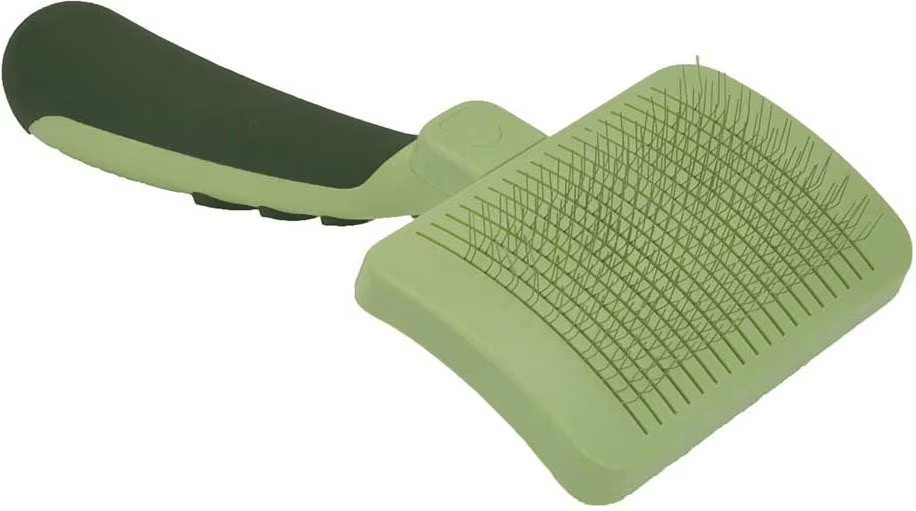
| Weight | 4.16 ounces |
| Life stage | Adult |
| Material | Stainless steel |
The Safari Self-Cleaning Slicker Brush for Cats features retractable bristles making it an ideal choice for Maine Coon owners who don’t like dealing with excessive tool cleaning. With the push of a button, you can dispose of loose hair over the trash can. Made with stainless steel, retractable pins, this brush doesn’t rust while it works hard to rid your cat of unwanted tangles.
The lightweight feel of this brush is another great aspect pet owners love. Your hands hurt less during the grooming process which makes it better for you and your cat. The biggest downside of this brush, however, is the slight sharpness of the bristles. The points aren’t rounded so care must be used when grooming your pet.
- Self-cleaning
- Does not rust
- Lightweight
- Bristle tips are slightly sharp
7. Hertzko Self-Cleaning Dog & Cat Slicker Brush
The Hertzko Self-Cleaning Dog & Cat Slicker Brush features retractable bristles to help make disposal of unwanted cat hair easier. The bristles are slightly curved to help them glide through your cat’s fur more easily. This design is also great at reaching mats and tangles that are embedded in your Maine Coon’s undercoat. After a good brushing, your cat’s coat will look healthier and shinier. With routine brushing, you will begin to see an improvement in their overall coat health. Although this brush features an easy-grip handle to make brushing easier on the pet owner, it also utilizes a release button that must be held while grooming. This can be quite difficult on the hands. The Pet Republique Dematting Rake is great for Maine Coons that have issues with tangles and knots in their hair. While it features dual sides like other grooming tools, the design is quite different. This rake uses steel blades that function like a comb. The tips of these blades are rounded to keep your cat’s skin protected from nicks or cuts. The inner layer of these blades has sharp ends that are used to thin your cat’s hair and trim away any tangles they encounter. The blades of this deshedding tool are designed not to rust or dull, making it quite durable for pet owners. The biggest downside of this deshedder is the mess it leaves behind. Unlike other tools, this rake doesn’t hold onto your cat’s hair. After grooming, you will be left cleaning up a mess of unwanted hair around your grooming area. If you’re looking for a grooming tool to help make your Maine Coon’s hair look and feel great, the Frisco Cat & Dog Pin Brush could be your answer. This brush is great at distributing your cat’s natural oils throughout its coat to give it a more stunning look. The gentle pins are designed to penetrate a cat’s fur without damaging the skin beneath. The handle of this brush is also made to make life easier for pet owners. The gentle grip will allow you to hold the brush throughout the grooming session without any issues. The biggest downside of this cat brush is the bristles. After several uses, you may find some will become embedded which makes it more difficult to use especially when your pet’s hair is tangled. The FURminator Hair Collection Dog & Cat Brush uses static electricity to remove unwanted hair, dirt, and debris from your Maine Coon’s fur. This four-sided brush features different bristles on each side. These rubber bristles are gentle on your cat’s skin and use the static electricity they create to help keep your cat’s coat looking great. Made from durable rubber, this brush will last for several uses. While this brush is unique, it does have downsides. The rubber bristles aren’t great at removing tangles. In many instances, tangles need to be handled with a different tool altogether. The hair that does attach to this brush is also difficult to remove and may require several cleanings to do so. There are several things you should take into consideration when choosing the best brush for your Maine Coon. In this buyer’s guide, we’ll give you a few pointers on what you should look for before you purchase your cat’s next grooming tool. By taking a look at the reviews above, you can see cat brushes for Maine Coons come in various designs. While it’s difficult to say which design is the overall best, choosing the brush you feel fits your and your pet’s needs best is your best option. While combs may be the most basic tool for brushing your Maine Coon, they are also one of the most reliable. While combs aren’t ideal for those who want a shiny coat for their cat, they do work wonders on tangles and knots. In many people’s opinion, a good comb is the best weapon against matted fur. Pet combs are inexpensive and can be a great addition to your grooming kit. Bristle brushes are a popular choice for pet owners who want to rid their Maine Coon of unwanted loose hair, dirt, and debris. While these brushes don’t work well on tangles, they are great at distributing your cat’s natural oils which makes their hair healthier. These brushes are relatively affordable and great at adding finishing touches after grooming your cat. Pin brushes are great for removing unwanted tangles from your Maine Coon’s fur. While these brushes are one of the most popular choices out there, remember the pins can be sharp. When choosing one of these brushes for grooming your cat, find one with rounded edges to keep your cat’s skin safer. Many pin brushes feature retractable pins. This allows for easier cleaning while the pins are protected when the brush is not in use. While this may be handy for most, keep an eye out on brushes like these that require owners to hold buttons throughout the grooming process. This can cause discomfort to the hands when used a lot. While grooming gloves do nothing for tangled hair, they do make life easier for pet owners. These gloves mimic the motion of offering your cat a pat. The rubber of these gloves may tug slightly if you’re too rough, so always be careful. For cats who love getting attention, like a kitten, these gloves can make grooming much simpler. These tools are your best option if your cat has issues with tangles or mats in its fur. Featuring rounded blades that protect your cat’s skin and sharp edges on the inner layer to cut away tangles, these tools are easy to use and function great. If this tool is the way you want to go, choose one with durable blades and easy-to-grip handles for better use. If you’re ready to buy the best brush for your Maine Coon, the list of reviews above should make your life easier. Our top pick, the Hepper Cat Brush, is best overall due to its ability to help reduce your cat’s shedding. The budget buy option on our list, the Hartz Groomer’s Best Combo Dog Brush, is an inexpensive option for keeping your cat looking great. The GoPets Dematting Comb is another grooming tool you could consider. By choosing any of these top choices, you’ll make grooming easier for both you and your gorgeous Maine Coon. Featured Image Credit: Olleg, Shutterstock
Weight
3.2 ounces
Life stage
Adult
Material
Stainless steel
8. Pet Republique Dematting Rake

Weight
0.32 ounces
Life stage
Adult
Material
Stainless steel
9. Frisco Cat & Dog Pin Brush
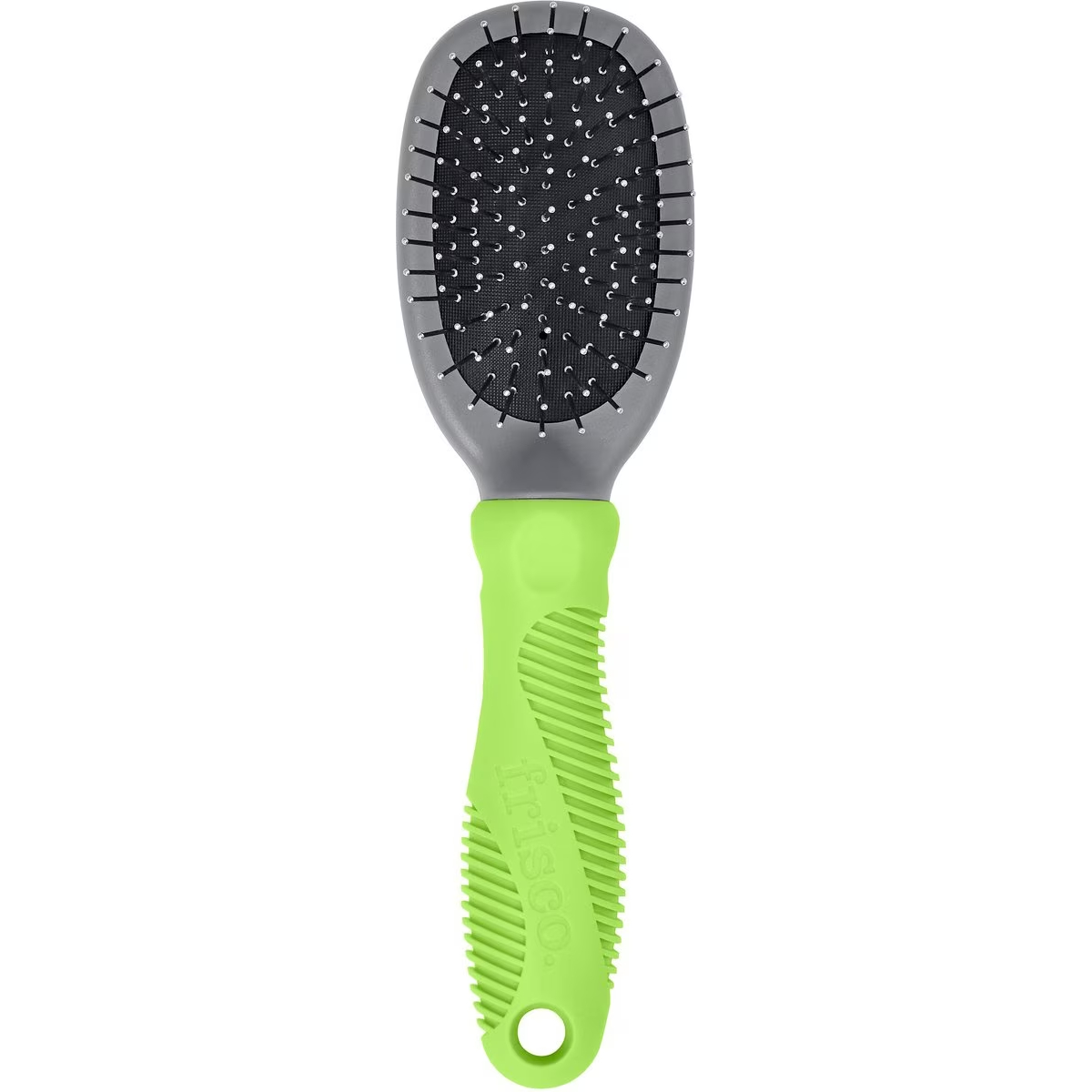
Weight
Unavailable
Life stage
All
Material
Plastic/Rubber
10. FURminator Hair Collection Dog & Cat Brush
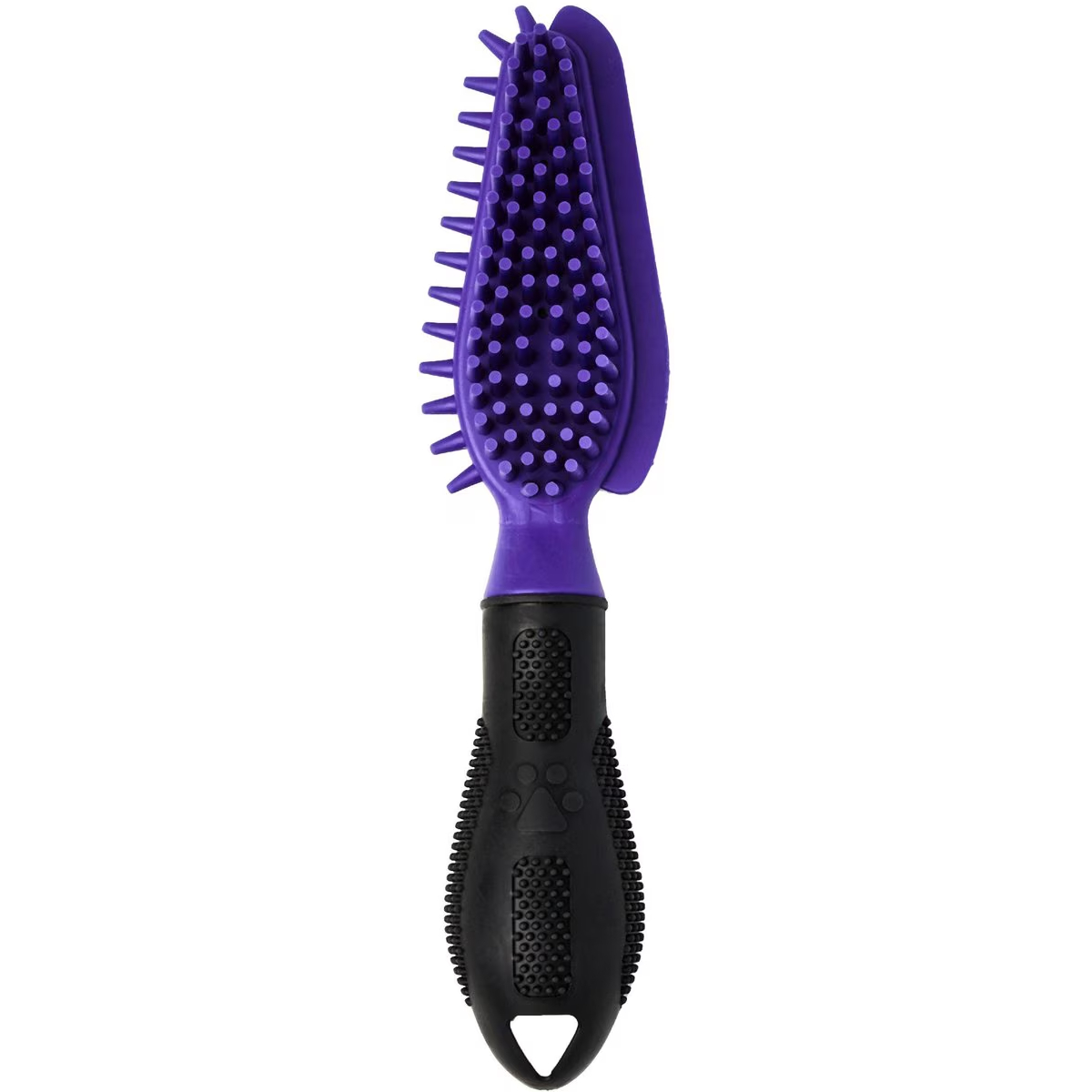
Weight
6 ounces
Life stage
Adult
Material
Rubber
Buyer’s Guide: Selecting the Best Brush for Maine Coon Cats
Brush Designs
Combs
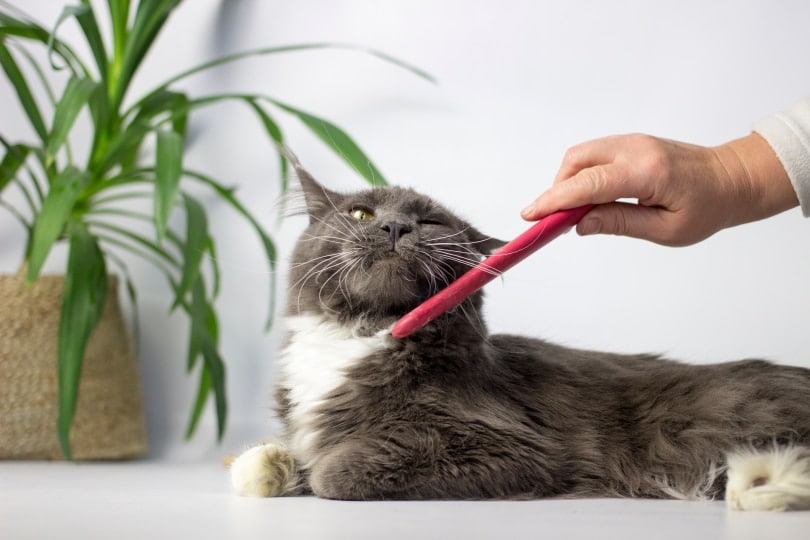
Brushes with Bristles
Brushes with Pins
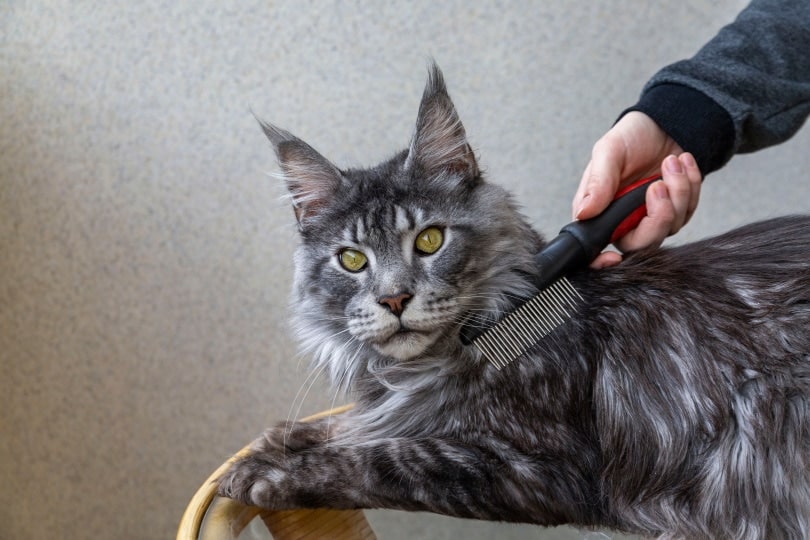
Grooming Gloves
Deshedding Tools
Summary
Contents


